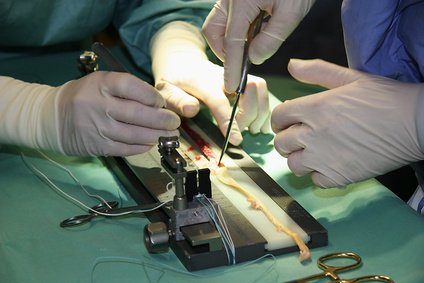A torn anterior cruciate ligament (ACL) is a common knee injury, particularly among athletes. This injury can significantly impact mobility and athletic performance, often leading to the question: to operate or not to operate? While surgical intervention is often recommended for active individuals seeking to return to sports, the decision is not always straightforward and depends on various factors, including age, activity level, knee stability, and overall health. This article delves into the complexities of ACL injuries, exploring the different surgical procedures available, the factors to consider when making a treatment decision, and the crucial role of rehabilitation in achieving a successful recovery.
To Operate or Not to Operate: Factors to Consider
The decision to undergo ACL surgery is a personal one that should be made in consultation with an orthopedic surgeon. While surgery is often recommended for active individuals who want to return to pivoting sports, non-surgical management may be appropriate for some individuals. Factors to consider include:
- Activity Level: Individuals who participate in high-demand pivoting sports, such as soccer, basketball, and skiing, are more likely to benefit from surgery.
- Knee Stability: If the knee is unstable and gives way during daily activities, surgery is usually recommended.
- Age: Younger individuals are generally more likely to benefit from surgery, as they have a higher likelihood of returning to their previous activity level.
- Overall Health: Other health conditions may influence the decision to undergo surgery.
Non-operative treatment, involving physical therapy and bracing, may be suitable for individuals with low activity levels, stable knees, or medical conditions that make surgery risky. However, it's important to understand that non-operative management may increase the risk of secondary knee injuries, such as meniscus tears, in the long term [1]. This highlights the importance of individualized treatment plans based on a thorough assessment of each patient's specific circumstances.
Surgical Options for ACL Reconstruction
When surgery is deemed necessary, ACL reconstruction is the standard procedure. This involves replacing the torn ligament with a graft, which is a piece of tissue taken from another part of the body or from a cadaver. The most common graft choices include:
Autografts (Tissue from Your Own Body):
- Hamstring Tendon Graft: This involves using tendons from the hamstring muscles located at the back of the thigh. This technique is popular due to its high success rate and relatively small incision.
- Patellar Tendon Graft: This involves using a portion of the patellar tendon, which connects the kneecap to the shinbone. This graft provides strong fixation and allows for early rehabilitation.
Allografts (Cadaver Tissue):
These are grafts taken from deceased donors. Allografts offer the advantage of avoiding a second surgical site for graft harvesting, but they may have a slightly higher risk of infection and graft failure compared to autografts. The choice of graft depends on various factors, including the surgeon's preference, the patient's activity level, and other individual considerations.
Surgical Techniques: Arthroscopy and Graft Fixation
ACL reconstruction is typically performed arthroscopically, using small incisions and specialized instruments. This minimally invasive approach results in less pain, smaller scars, and faster recovery compared to traditional open surgery. The graft is secured to the bone using various fixation methods, such as screws, buttons, or sutures. The specific fixation technique depends on the graft choice and the surgeon's preference. Regardless of the graft or fixation method used, meticulous surgical technique is essential for achieving a successful outcome. This meticulous approach minimizes complications and optimizes the chances of a successful recovery and return to activity.
Rehabilitation: The Cornerstone of Recovery
Rehabilitation is a crucial component of ACL reconstruction recovery. A structured rehabilitation program, guided by a physical therapist, is essential for regaining strength, range of motion, and stability in the knee. The rehabilitation process typically involves several phases, starting with reducing pain and swelling, followed by regaining range of motion, strengthening muscles, and gradually returning to activity. The timeline for recovery varies depending on the individual and the specific surgical technique used, but it typically takes several months to return to full activity. Adherence to the rehabilitation protocol is crucial for achieving optimal outcomes and minimizing the risk of re-injury. This dedicated approach to rehabilitation ensures that the knee regains its strength, stability, and full range of motion, allowing for a safe return to activity.
A Path to Recovery and Return to Activity
A torn ACL can be a challenging injury, but with appropriate treatment and dedicated rehabilitation, most individuals can return to their previous activity level. The decision to undergo surgery should be made in consultation with an orthopedic surgeon, considering individual factors such as activity level, knee stability, and overall health. Whether you choose surgical or non-surgical management, a structured rehabilitation program is essential for achieving a successful outcome. With proper care and commitment, you can overcome this injury and return to the activities you love.
- American Academy of Orthopaedic Surgeons (AAOS). (Various publications on ACL injuries and treatment).













